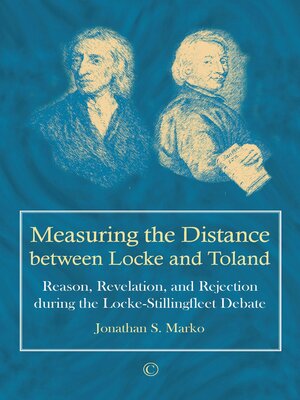Measuring the Distance between Locke and Toland
ebook ∣ Reason, Revelation, and Rejection during the Locke-Stillingfleet Debate
By Jonathan S Marko

Sign up to save your library
With an OverDrive account, you can save your favorite libraries for at-a-glance information about availability. Find out more about OverDrive accounts.
Find this title in Libby, the library reading app by OverDrive.



Search for a digital library with this title
Title found at these libraries:
| Library Name | Distance |
|---|---|
| Loading... |
Ever since Bishop Stillingfleet accused John Locke of having unwittingly paved the way for the alleged heresy promulgated in John Toland's Christianity Not Mysterious, the latter two thinkers and works have been consistently joined in histories of philosophy covering the rise of natural religion in England. While scholars have generally thought that Locke got the better of the good bishop in their subsequent written exchanges initiated by the charge, they appear merely to assume that Stillingfleet correctly read Toland and that Locke accepts that reading. Perhaps the most obvious piece of evidence favouring that stance is that while Locke clearly admits 'above reason' doctrines, Toland dismisses them: Christianity is not mysterious! Through patient exposition of relevant texts and letters, deconstruction of scholarly works, and careful reasoning, Measuring the Distance between Locke and Toland shows that Toland's deviations from Locke regarding reason and faith are far more minor thananyone has concluded. Stillingfleet was correct to connect them, but was incorrect in the way that he did it.







